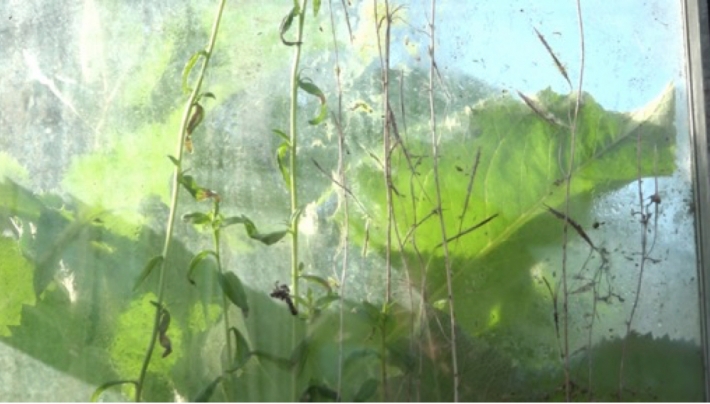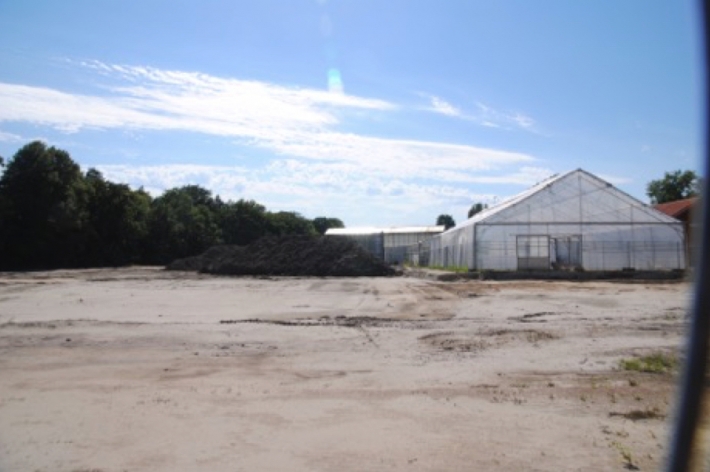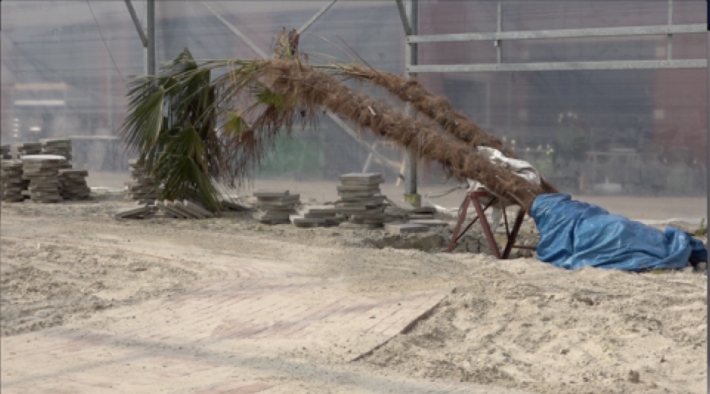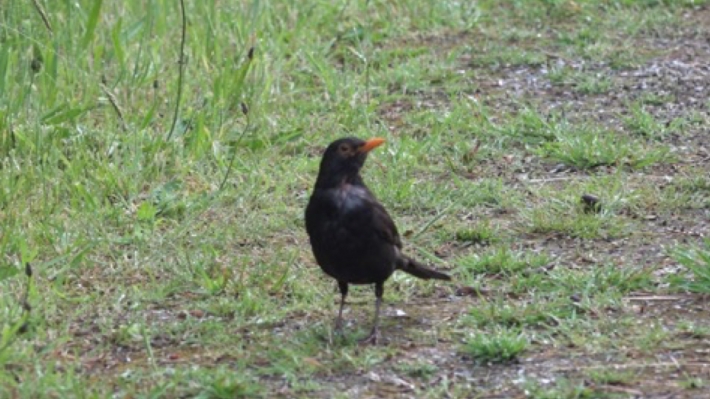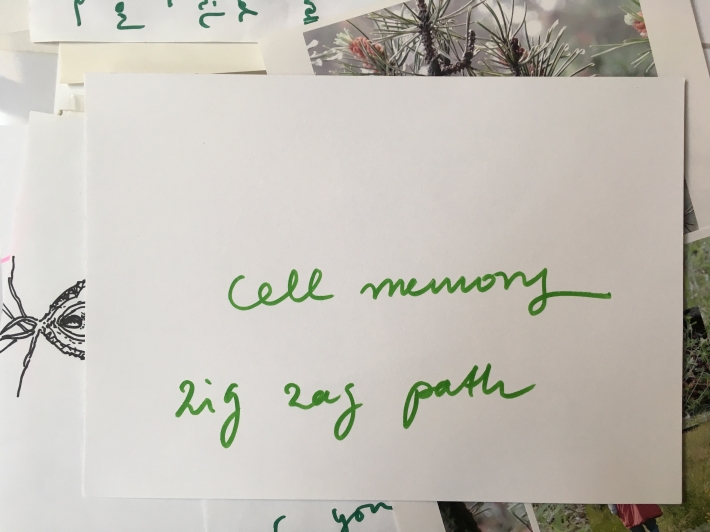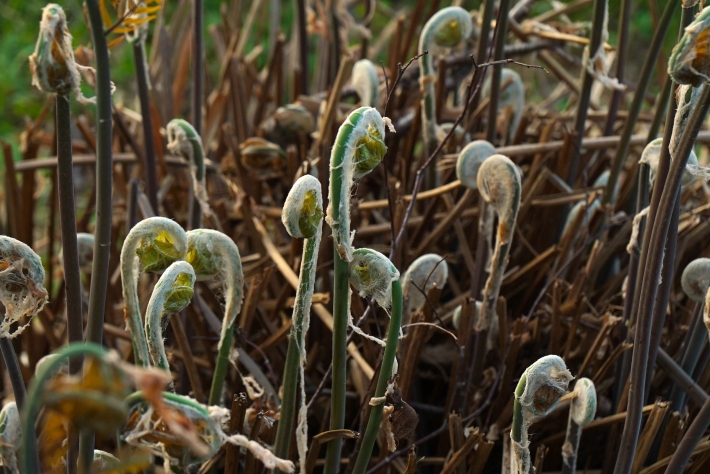Cell Memory - Thank You Plant, 2016 - 2018
video stills, drawings
Commissioned work for The Hortus Botanicus in Haren (Groningen The Netherlands), commissioned by Stichting Behoud de Groene Hortus in collaboration withTAAK
Film and permanent video installation.
Work in progress
With the generous support of the Mondriaanfonds
About Cell Memory, Thank You Plant, realisation, 2018-2019 (TAAK press):
The video installation Cell Memory, Thank You Plant of Wineke Gartz in the Chinese Flower Pavilion of the Ming Garden, Hortus Haren is about paying attention: to plants, to growth, to light, to the Hortus, and about perception.
In response to an invitation from the Hortus Haren and TAAK, Gartz visited the gardens of the Hortus on multiple occasions. She filmed in the gardens in different seasons, and saw an analogy between the resilience of nature and the manner in which The Hortus has fought for existence since losing its primary, scientific function. She saw how the organization—just as the gardens—has grown, changed, and moved forward.
In her video, Gartz captures the continuous transitions of nature and the earth. She draws parallels between developments and processes at the micro level of the plants, the “meso” level of the Hortus, and the macro level of the world and universe. This vision is reflected in her many changes of focus—from close-ups of plants and flowers to long-distance views of paths, fields and lines of sight.
In the Chinese Flower Pavilion, Gartz creates an environment with colored windows in which the visitor is immersed in the video installation. In the video she meshes her observations of the gardens of the Hortus with archival material and text fragments. The soundscape of sound artist and sculptor Arnout Killian combines music and sounds of the garden.
Gartz took inspiration from Peter Westbroek’s book The Discovery of the Earth (De Ontdekking van de Aarde). In this book, noted geologist Peter Westbroek gives a view of how the earth evolved and was civilized. To understand these processes, according to Westbroek, we need a synthesis of different sciences and specialisms that give mankind a place in a symbiotic worldview. With her collage-like video Gartz tries to show that everything is connected—nothing exists separately from the rest. To complement the video, Westbroek gave a lecture in Haren showcasing 4.5 billion years of earth science in a nutshell.
About Wineke Gartz
Wineke Gartz (Eindhoven, 1968) lives and works in Amsterdam. She received her education at schools of visual art in Tilburg, St. Joost in Breda, and at the State Academy of Fine Arts in Amsterdam. She is best known for her site-specific installations in which she uses multiple video and slide projections, objects, drawings, music and light. Her work has been shown in the 3A Gallery in New York, Witte de With in Rotterdam and DordtYart in Dordrecht.
About Peter Westbroek
Peter Westbroek (1937) is emeritus professor of geology. He played a role in the development the Earth System Science approach to geology. He belonged to the Dutch Royal Academy of Science and was the first Dutch scientist after Erasmus to be named professor at the Collège de France in Paris. His book The Discovery of the Earth (De Ontdekking van de Aarde) takes the perspective of the earth as an integrated system in the context of an astounding history and expounds on the necessity of planetary self-knowledge.
“Cell Memory, Thank you Plant” is part of the program “Lost and Found” (Verloren en Hervonden) that was commissioned by the Stichting Behoud Groene Hortus and developed with TAAK. Lost and Found was made possible with the support of Kunstraad Groningen, Mondriaan Fonds, Rijksuniversiteit Groningen (RUG), Vereniging Vrienden van de Hortus Haren, Gemeente Haren, Stichting Behoud Groene Hortus
Art Program Lost and Found
For the program “Lost and Found” (Verloren en Hervonden), five artists create three unique works of art for the Hortus Haren. The artists explore the function of the Hortus in the modern world. The projects focus on the relations between humans, nature and landscape. “The Wrinkling”, by Gabriel Lester, was the first of the projects, with an opening in the Hondsrug garden in July, 2017. In September 2017, the Hortus Hermitage (Sjaak Langenberg and Rosé de Beer, in collaboration with Refunc) was opened in the Groninger garden. Cell Memory, Thank you Plant by Wineke Gartz, in the Chinese Flower Pavilion, completes the Lost and Found program.
De video-installatie Cell Memory, Thank You Plant van Wineke Gartz in de Ming-tuin in het Chinese Bloemenpaviljoen in de Hortus Haren gaat over aandacht geven: aan planten, aan groei, aan licht, aan de Hortus, en over waarnemen.
Op uitnodiging van de Hortus Haren en TAAK verbleef Gartz meerdere keren in de tuinen van de Hortus. Ze filmde tijdens verschillende jaargetijden en zag een analogie tussen de veerkracht van de natuur en manier waarop de Hortus vecht voor haar voortbestaan sinds ze werd afgestoten door de Rijksuniversiteit Groningen en daarmee haar wetenschappelijke functie verloor. Zij zag hoe de organisatie - net als de tuinen - groeit, verandert, en weer verder gaat.
In haar video maakt Gartz de voortdurende transitie van de aarde en de natuur voelbaar. Zij trekt parallellen tussen ontwikkelingen en processen op microniveau van de planten, op mesoniveau van de hortus en op macroniveau van de wereld en het heelal. Daarom wisselt steeds zij steeds van focus: soms filmt ze dicht op de huid van de planten en bloemen en dan weer kijkt ze van een afstand naar de tuin en toont de paden, velden en doorkijkjes.
In het Chinese Bloemenpaviljoen creëert Gartz een omgeving met gekleurde ramen waarin de bezoeker zich kan onderdompelen in haar video-installatie. In de video verweeft ze observaties van de verschillende tuinen in de hortus met archiefmateriaal en tekstfragmenten. De soundscape van geluids- en beeldend kunstenaar Arnout Killian combineert geluiden uit de tuin met muziek.
Een belangrijke inspiratiebron voor Gartz was het boek De Ontdekking van de Aardevan Peter Westbroek. De geoloog laat hierin zien hoe de aarde evolueert en civiliseert. Om dit proces te kunnen begrijpen is volgens hem een synthese nodig tussen de verschillende wetenschappen en specialismen waarin ook de mens een plaats moet hebben: een symbiotisch wereldbeeld. Met haar collageachtige video wil Gartz laten zien dat alles verbonden is, en niets losstaat van elkaar.
press TAAK: Op 20 oktober 2018 vertoonde Wineke Gartz de trailer van Cell Memory, Thank you Plant, het programma van de opening staat hier.
Over Wineke Gartz
Wineke Gartz (Eindhoven, 1968) woont en werkt in Amsterdam. Zij volgde haar opleiding aan Academie voor beeldende vorming in Tilburg, St. Joost in Breda, en de Rijksakademie van beeldende kunsten in Amsterdam. Ze staat vooral bekend om haar site-specifieke installaties, waarin zij gebruikmaakt van meerdere video- en diaprojecties, objecten, tekeningen, muziek en licht. Haar werk was onder meer te zien in 3A Gallery te New York, Witte de With te Rotterdam en DordtYart te Dordrecht. www.winekegartz.com
Onderdeel van Verloren en Hervonden
Voor het kunstprogramma Verloren en Hervonden ontwerpen vijf kunstenaars drie bijzondere kunstwerken voor de Hortus Haren. Op vernieuwende wijze onderzoeken deze kunstenaars welke functie een hortus botanicus heden ten dage kan vervullen. De kunstprojecten schenken bijzondere aandacht aan de verhouding tussen mens, natuur en landschap. Op 9 juni 2017 opende De Rimpeling van Gabriel Lester in de Hondsrugtuin, en op 2 september 2017 opende in de Groninger tuin Hortus Hermitage van Sjaak Langenberg en Rosé de Beer in samenwerking met Refunc. Met Cell Memory, Thank you Plant van Wineke Gartz in het Chinese Bloemenpaviljoen is het kunstprogramma Verloren en Hervonden voltooid.
